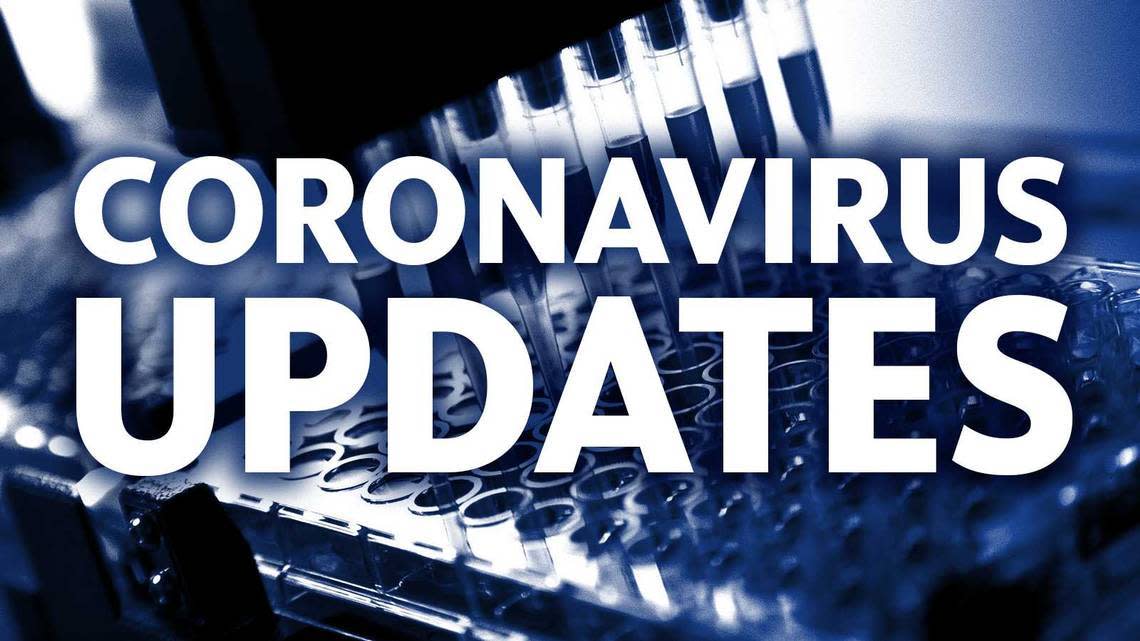‘The situation is dire’: Idaho activates crisis standards statewide over COVID-19

Editor’s note: This was our breaking news story Thursday when crisis standards of care was announced. Below are links to our other stories produced about the situation:
‘I feel like we broke the system’: Inside the fight against COVID-19 at Saint Al’s in Boise
We answer reader questions about crisis standards
‘The death and the despair’: Idaho adds 1,218 COVID cases, 40 deaths as hospitals buckle
COVID-19 by the numbers: How Idaho hospitals reached crisis 18 months into pandemic
‘Net is gone’: All of Idaho put in crisis standards of care amid ‘unabated’ COVID spread
Crisis standards of care now in place across all of Idaho. What does that mean?
Editorial: Idaho crisis standards of care caused by unvaccinated COVID-19 patients affects us all
▪ ▪ ▪
In the latest blow in the state’s battle with COVID-19, the Idaho Department of Health and Welfare announced Thursday that it has activated crisis standards of care for the entire state.
The request to expand crisis standards beyond North Idaho was made by St. Luke’s Health System. St. Luke’s has major hospitals in Boise and Meridian.
Crisis standards of care were created in June 2020 as a plan to strategically ration health care if hospitals become overwhelmed with the demands in front of them. When crisis standards are implemented, hospital beds may not be available to someone who needs it, or beds could be in repurposed rooms not typically used for medical treatment.
A note left on the hospital staff whiteboard by Dr. Kenneth Krell, director of eastern Idaho’s largest intensive care unit. #idahoCovid19 pic.twitter.com/ez4vOvJXVr
— Sally Krutzig (@sallykrutzig) September 16, 2021
Crisis care standards mean hospitals must prioritize patients differently. Typically, a hospital prioritizes those who need medical attention most and treats them first. When crisis standards are activated, health care is given to patients who are most likely to survive.
Health and Welfare said the following in its Thursday news release: “In other words, someone who is otherwise healthy and would recover more rapidly may get treated or have access to a ventilator before someone who is not likely to recover.”
“The situation is dire — we don’t have enough resources to adequately treat the patients in our hospitals, whether you are there for COVID-19 or a heart attack or because of a car accident,” IDHW Director Dave Jeppesen said in a news release Thursday.
Each hospital will implement its own crisis standards of care policies as needed, according to Health and Welfare. If a hospital is managing under its current circumstances, it can continue to operate in that way.
Overwhelmed Idaho hospitals can use ‘crisis care’ for COVID-19. What does that mean?
On Sept. 6, crisis standards were activated in the the Panhandle Health District and the Idaho North Central District. A day after the announcement, Dr. Robert Scoggins, a doctor at Kootenai Health in Coeur d’Alene, told reporters that patients were being triaged outside of the ER, and those coming to the hospital should expect longer waits in emergency rooms.
Crisis standards were ‘imminent’ in Idaho
Health officials have warned of the activation of crisis standards for weeks.
On Aug. 31, Idaho Gov. Brad Little said he hoped deploying members of the Idaho National Guard to hospitals would be enough to avoid triggering crisis standards, though that has not been the case.
He also encouraged all Idahoans to get the COVID-19 vaccine as a way to mitigate crisis standards. As of Wednesday, roughly 50% of Idahoans ages 12 or older are fully vaccinated, according to Health and Welfare. Little has also said the state is “exploring legal action” in response to President Joe Biden’s plan to mandate coronavirus vaccines or regular testing for large businesses.
On Tuesday, Jeppesen said the move to crisis standards in the Treasure Valley was “imminent,” as cases had steadily grown in the previous weeks.
“Hospitalizations in Southwest, Central and South Central health districts, which includes the Treasure Valley and the Magic Valley, are reaching a critical point,” Jeppesen said at the Tuesday news briefing.
In a statement issued to the Idaho Statesman via email Thursday, Little again encouraged Idahoans to get vaccinated.
“Idaho has reached a historic point,” Little said in the statement. “There are too many patients with COVID-19 in need of care in our state, and it is limiting health care access for everyone in need of all types of medical care. The vast majority of those in our state contracting and spreading COVID-19, hospitalized with COVID-19, and dying of COVID-19 are unvaccinated.
“We have taken many steps to alleviate the pressure on our health care system due to the influx of patients with COVID-19, but the activation of statewide Crisis Standards of Care signals the need for more Idahoans to do their part to slow the spread of COVID-19 and to choose to receive the vaccine. The vaccine is our primary defense in ending the pandemic and ensuring our students have a productive in-person school year. We will continue to support our hospitals by adding staff and by making monoclonal antibody treatments available — which are effective in reducing COVID-19 hospitalizations but should not be considered an alternative to the safe and effective vaccine.
“Idahoans, please come together to protect yourselves and our communities, and to thank our heroes in health care. Together, and only together, will we get through this very challenging time in our state’s history.”
¿QUÉ SIGNIFICAN LAS NORMAS DE ATENCIÓN EN CASO DE CRISIS?
How did Idaho activate crisis standards of care in North Idaho? Who will get treated?
Crisis standards: Kootenai doctor details ‘extreme strain’ from Idaho’s COVID-19 surge

